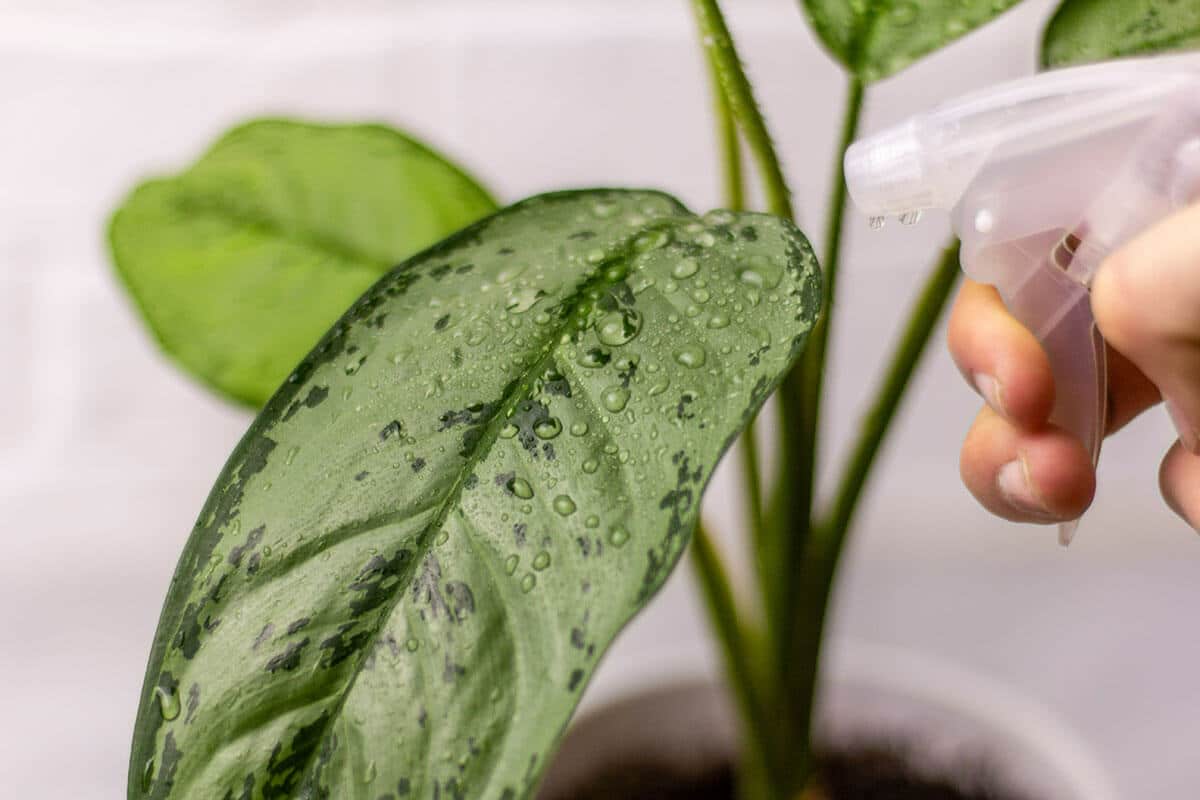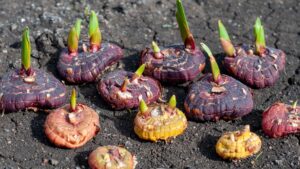Houseplants bring life and happiness to your home. Unfortunately, certain insects can attack them, and can even put the life of your beautiful tropical plants at risk. To act effectively and at the right time, you must first know how to identify the pests that have taken up residence in your home. Here are some insects that are often found in houseplants.

Fungus gnats
Small flies similar to fruit flies are flying around your plant? These are actually sciaridae or soil flies. The adults seen flying around are not harmful, but their root-feeding larvae can slow down the growth of your plants and decrease their strength.
What to do:
- Control watering. Gnats thrive in soil that is constantly moist.
- Place a yellow sticky trap, available at garden centres, to catch the adults so they can no longer lay eggs.
- Repot your plant or replace the top few inches of potting soil with new soil. Be sure to use a potting soil that is suitable for houseplants.
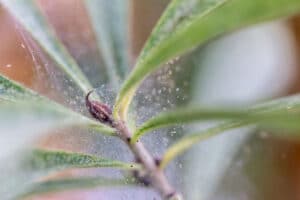
Spider mites
If you see webs weaving across your plants and when you lift the leaves, you see tiny red spiders, you have a spider mite infestation. Your plant will lose its color until it becomes translucent.
What to do:
- Increase the humidity around the plant by spraying the foliage. Spider mites multiply in warm weather, so be careful in winter because of space heaters.
- Clean your plant thoroughly with a mild soap, then spray a solution of black soap (1 tablespoon in 1 liter of water) once or twice a week.
- Clean the whole environment of the plant so that a forgotten insect does not reinfect your plant.
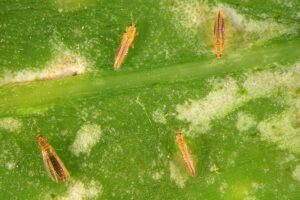
Thrips
Is your plant covered in gray spots and black dots? Look closer and you’ll probably see small insects measuring 1 to 2 millimeters: thrips. These small insects bite plants to feed on the contents of their cells.
What to do:
- Increase ambient humidity by spraying foliage or growing plants on a gravel bed. Thrips like heat and dryness.
- Set up a yellow sticky trap to capture adults.
- Spray the plant 2 to 3 times a week with a black soap solution. Be sure to rinse your plant with clean water one hour after treatment.
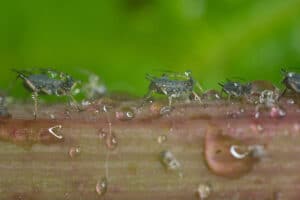
Aphids
Your leaves are wilting and drying out and a sticky substance is covering them. This substance is called honeydew and is secreted by aphids. These little bugs come in different colors: red, black, yellow and green, and can be hard to see with the eye, especially the green ones, obviously.
What to do:
- Spray the plant 2-3 times a week with a black soap solution. Be sure to rinse your plant with clean water one hour after treatment.
- Use a low impact insecticide that you can find in garden centres, they are quite effective on aphids.
- Sprinkle a tablespoon of coffee grounds on the soil once a month. Coffee grounds repel aphids.
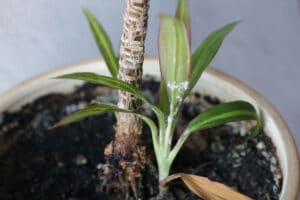
Mealybugs
If white cotton ball-like spots appear in the nodes – the junction of leaves and stems – and under the leaves of your plants, mealybugs have taken up residence. These insects are very persistent and are not controlled by insecticides. It’s up to you to decide whether it’s worth the effort to get rid of them or whether you should adopt a new plant.
What to do – if you decide to attempt rescue:
- Rub all parts of the plant, whether infected or not, with rubbing alcohol diluted 1:10 with water.
- Repeat the treatment as soon as you see a new spot appear: be very vigilant.
Preventing infestations
To prevent insect damage, make sure you give your plants what they need to be healthy: the right light, enough water at the right time, fertilizer, the right temperature, etc. This way, they will be able to better fight off attacks. Be aware of any changes in your plants, quick action could save them. Also, when you bring a new plant into your environment, isolate it for a while to make sure it doesn’t introduce pests that could infest your other plants.
If you have any doubts about the health of your plants, discuss them with our garden centre specialists, who can help you identify the pest and suggest the right care to eliminate them…

